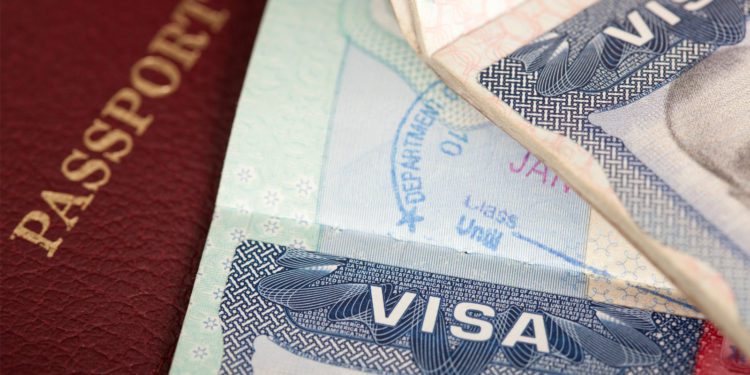Visa Waiver Program and Business Aviation: Answers to Common Questions

The Visa Waiver Program (VWP) allows nationals of 38 participating countries to travel to the U.S. for stays of 90 days or less without obtaining a visa. Many corporate operators have registered as ‘signatory carriers,’ which gives them the same privileges as scheduled commercial airlines in granting immigration status to eligible passengers. If you’re not a signatory carrier, you may not bring non-U.S. nationals to the U.S. without valid U.S. visas. However, with the VWP you have the ability to carry non-U.S. visa holders into the country, which can prove invaluable for both private non-revenue and charter (non-scheduled commercial) operators. Registering as a signatory carrier under VWP helps eliminate barriers of travel.
1. Why should operators participate?
Non-U.S. nationals flying to the U.S. on private non-revenue and charter (non-scheduled commercial) flights require a valid U.S. visa – even if they have their ESTA approval – unless the operator is a VWP signatory carrier. It remains a common misconception that having an ESTA approval allows a non-U.S. national to enter the U.S. without a visa aboard corporate aircraft. This is not the case. ESTA is NOT a substitute for a U.S. Visa unless passengers are traveling on a signatory carrier. If these parameters are not met, you’ll be subject to fines, penalties, significant operational delays, and the prospect of immediate deportation of passengers.
2. What’s the process to register to become a signatory carrier?
The program is open to applicants based in the U.S. and abroad. U.S.-based operators can be either private non-revenue or charter (non-scheduled commercial). However, non-U.S. based operators without a U.S.-based subsidiary may only operate commercially. Application requires an I-775 visa waiver agreement, information on aircraft participating in the program, and a company tax ID for U.S.-based private operators or a customs bond (typically $75,000 – $100,000) for non-U.S. based charter operators. Confirmation of registration takes up to 60 days from document submission. A 3rd-party provider can arrange this service for any client that requests it. The process usually goes smoothly, but to avoid any delays on obtaining the approval, all User Fee accounts must:
- Be current with U.S. Customs and Border Protection, and
- Ensure that any administratively final penalties have been paid. (Note: Administratively final penalties are the result of a violation of the immigration and Nationality Act, or U.S. Customs laws.)
3. What’s involved in maintaining VWP status?
VWP contractual agreement between the Carrier and Department of Homeland Security U.S. Customs and Border Protection states that the VWP must be renewed seven years after the effective date, when this agreement will become null and void. You must advise of company changes, such as changing the company name or changing the legal structure of the company from a limited liability company to a corporation. You must also advise if the company is sold to non-U.S. owners with no U.S. subsidiary. VWP covers your operation as a whole and is not tied to specific aircraft.
4. How are revisions processed?
Operator revisions to VWP can usually be processed quickly. However, if your company name changes, or your company changes from U.S. to non-U.S. ownership, with no associated U.S. subsidiary, you’ll need to apply for a new VWP authorization.
5. How does a company operate under the VWP?
With VWP registration, you may bring passengers from 38 currently participating countries to the U.S. without U.S. visas. All non-U.S. passengers must have an ESTA (good for two years or until the applicants passport expires, whichever is sooner). Crew should confirm that all passengers have either U.S. visas or ESTAs. Always carry a copy of your VWP approval aboard your aircraft to show to Customs on arrival. You may land at any airport of entry (AOE) as long as Customs can process non-U.S. nationals at that location (check with your 3rd-party provider). The VWP covers passengers only. The crew will need to have visas prior to arrival. Passengers who arrive in the U.S. aboard your aircraft may stay up to 90 days and are permitted to make side trips to Canada, Mexico, or adjacent islands during this period without a U.S. visa. For more information on adjacent islands, please reference the following the following page, section “Adjacent Islands” toward bottom of the page: https://www.immihelp.com/visa-waiver-program/.
6. What are the countries approved to participate in the Visa Waiver Program?
Not all countries are approved to participate in the Visa Waiver Program. Currently there are 38 countries that are on the approved list and are as follows:
Andorra, Australia, Austria, Belgium, Brunei, Chile, Czech Republic, Denmark, Estonia, Finland, France, Germany, Greece, Hungary, Iceland, Ireland, Italy, Japan, Latvia, Liechtenstein, Lithuania, Luxembourg, Malta, Monaco, the Netherlands, New Zealand, Norway, Portugal, San Marino, Singapore, Slovakia, Slovenia, South Korea, Spain, Sweden, Switzerland, Taiwan, United Kingdom.
It should also be noted that the list of countries given above doesn’t change frequently. The last changes made were the removal of Brazil in 2002 and the addition of Greece in 2009.
Questions?
If you have any questions about this article, contact VISAWAIVER@univ-wea.com.
Later, we’ll discuss common FAQs related to operating under the Visa Waiver Program.



